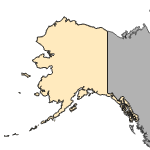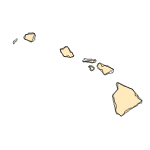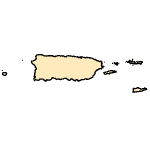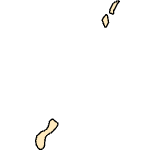Morone chrysops × mississippiensis
(White Bass × Yellow Bass)
Fishes
Native Hybrid |
|
Common name: White Bass × Yellow Bass
Identification: Hybrid.
Size: 1.04 kg
Native Range: None; artificial hybrid.



|

Alaska |

Hawaii |

Puerto Rico &
Virgin Islands |

Guam Saipan |
Hydrologic Unit Codes (HUCs) Explained
Interactive maps: Point Distribution Maps
Nonindigenous Occurrences:
Table 1. States with nonindigenous occurrences, the earliest and latest observations in each state, and the tally and names of HUCs with observations†. Names and dates are hyperlinked to their relevant specimen records. The list of references for all nonindigenous occurrences of Morone chrysops × mississippiensis are found here.
Table last updated 1/12/2026
† Populations may not be currently present.
Means of Introduction: Intentionally stocked as a sport fish in Louisiana and Oklahoma. Natural hybridization in Texas.
Status: Maintained by stocking in Louisiana and Oklahoma. Established in Texas.
Impact of Introduction: These hybrids represent a threat to the genetic integrity of the parental species because of potential backcrossing (Fries and Harvey 1989).
References: (click for full references)
Burr, B. - Southern Illinois University at Carbondale, IL. 1995.
Fries, L.T., and W.D. Harvey. 1989. Natural hybridization of white bass with yellow bass in Texas. Transactions American Fisheries Soceity 118(1):87-89.
International Game Fish Association. 1994. World record game fishes. International Game Fish Association, Pompano Beach, FL.
Page, L. M., and B. M. Burr. 1991. A field guide to freshwater fishes of North America north of Mexico. The Peterson Field Guide Series, volume 42. Houghton Mifflin Company, Boston, MA.
Texas Parks and Wildlife Department. 1993. Waterbody records listing.Texas Parks and Wildlife News, May 14, 1993. 15 pp.
Texas Parks and Wildlife Department. 2001. Fish Records: Water Body - All Tackle. Texas Parks and Wildlife Department. April 24, 2001
Other Resources:
Fact Sheet for Morone chrysops - USGS Nonindigenous Aquatic Species Database
Fact Sheet for Morone mississippiensis - USGS Nonindigenous Aquatic Species Database
Author:
Fuller, P.
Revision Date: 5/9/2019
Peer Review Date: 9/16/2011
Citation Information:
Fuller, P., 2026, Morone chrysops × mississippiensis: U.S. Geological Survey, Nonindigenous Aquatic Species Database, Gainesville, FL, https://nas.er.usgs.gov/queries/FactSheet.aspx?speciesID=780, Revision Date: 5/9/2019, Peer Review Date: 9/16/2011, Access Date: 1/13/2026
This information is preliminary or provisional and is subject to revision. It is being provided to meet the need for timely best science. The information has not received final approval by the U.S. Geological Survey (USGS) and is provided on the condition that neither the USGS nor the U.S. Government shall be held liable for any damages resulting from the authorized or unauthorized use of the information.